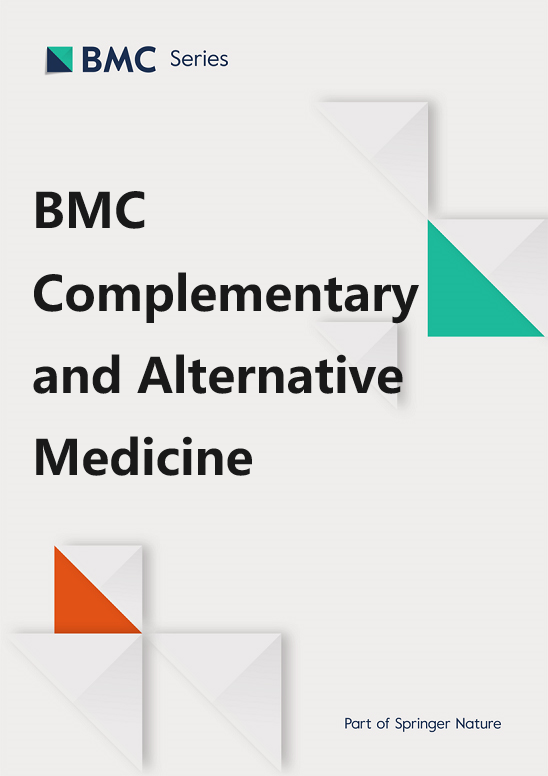纳米封装卷叶芹提取物的植物成分分析、抗炎、抗菌和抗癌作用
IF 3.4
2区 医学
Q1 Medicine
引用次数: 0
摘要
卷柏属植物分布于世界各地,在传统医学中有着悠久的历史。随着纳米技术向药物输送和生物医学等领域的扩展,本研究旨在评估卷叶连翘提取物作为抗菌、消炎和抗癌剂的潜力,同时对甲醇(MeOH)提取物的有效成分进行化学分析。采用液相色谱法和电喷雾源连接质谱法(LC-ESI-MS)对 85% 的 MeOH 提取物的化学成分进行了研究。C. arvensis 的 85% MeOH 提取物和正丁醇馏分首次被载入海藻酸盐/壳聚糖纳米颗粒。对 85% 的 MeOH 提取物、正丁醇馏分及其负载的纳米颗粒进行了细胞毒性、抗癌、抗炎和抗菌活性(针对致病菌大肠杆菌和金黄色葡萄球菌)测试。对 C. arvensis 的 85% MeOH 提取物进行了 LC-ESI-MS 化学分析,发现了 26 种酚类物质,其中 16 种是酚酸类,6 种是黄酮类,1 种糖脂类,1 种倍半萜类和 2 种未知化合物。傅立叶变换红外光谱证实了 85% 的 MeOH 提取物和正丁醇馏分被封装到海藻酸盐/壳聚糖纳米粒子上,并且通过 TEM 获得的小尺寸纳米粒子保持了其无毒性并增强了其抗炎活性(IC50 从 1050 微克/毫升降至 175 微克/毫升)。在最大浓度为 1000 µg/ml 时,对 HepG2 的抗癌活性增强,细胞存活率从 28.59 ± 0.52 降至 20.80 ± 0.27。此外,在大肠杆菌(Gm-ve)和金黄色葡萄球菌(Gm + ve)中,封装提取物的 MIC 分别从 31.25 µg/ml 和 15.56 µg/ml 降至 7.78 µg/ml。海藻酸盐和壳聚糖都是很好的天然聚合物,可用于封装过程,对 C. arvensis 提取物的生物活性成分产生积极影响,并改善其生物特性。本文章由计算机程序翻译,如有差异,请以英文原文为准。
Phytoconstituent analysis, anti-inflammatory, antimicrobial and anticancer effects of nano encapsulated Convolvulus arvensis L. extracts
The Convolvulus genus is distributed all over the world and has a long history in traditional medicine. As nanotechnology expands its reach into areas like drug delivery and biomedicine, this study intends to assess the potential of Convolvulus arvensis L. extracts as anti-bacterial, anti-inflammatory and anti-cancer agents, along with chemical profiling of the methanolic (MeOH) extract active ingredients. The chemical composition of an 85% MeOH extract was investigated by liquid chromatography with an electrospray source connected to mass spectrometry (LC-ESI-MS). Both the 85% MeOH extract and n-butanol fraction of C. arvensis were loaded for the first time on alginate/chitosan nanoparticles. The 85% MeOH extract, n-butanol fraction and their loaded nanoparticles were tested for their cytotoxicity, anticancer, anti-inflammatory and antibacterial activity (against pathogenic bacteria, E. coli and S. aureus). The chemical investigation of 85% MeOH extract of C. arvensis underwent LC-ESI-MS analysis, revealing twenty-six phenolic substances, of which 16 were phenolic acids, 6 were flavonoids, 1 glycolipid, 1 sesquiterpene and 2 unknown compounds. The FT-IR spectra confirmed the encapsulation of the 85% MeOH extract and n-butanol fraction onto alginate/chitosan nanoparticles and small size obtained by TEM maintained them nontoxic and enhanced their anti-inflammatory activity (the IC50 was decreased from 1050 to 175 µg/ml). The anti-cancer activity against HepG2 was increased and the cell viability was decreased from 28.59 ± 0.52 to 20.80 ± 0.27 at a maximum concentration of 1000 µg/ml. In addition, the MIC of encapsulated extracts was decreased from 31.25 to7.78 µg/ml in E. coli (Gm-ve) and from 15.56 to 7.78 µg/ml in S. aureus (Gm + ve) bacteria. Both alginate and chitosan are excellent natural polymers for the encapsulation process, which affects positively on the bioactive constituents of C. arvensis extracts and improves their biological properties.
求助全文
通过发布文献求助,成功后即可免费获取论文全文。
去求助
来源期刊

BMC Complementary and Alternative Medicine
INTEGRATIVE & COMPLEMENTARY MEDICINE-
CiteScore
7.00
自引率
0.00%
发文量
0
审稿时长
3 months
期刊介绍:
BMC Complementary Medicine and Therapies is an open access journal publishing original peer-reviewed research articles on interventions and resources that complement or replace conventional therapies, with a specific emphasis on research that explores the biological mechanisms of action, as well as their efficacy, safety, costs, patterns of use and/or implementation.
 求助内容:
求助内容: 应助结果提醒方式:
应助结果提醒方式:


